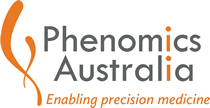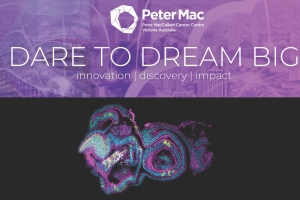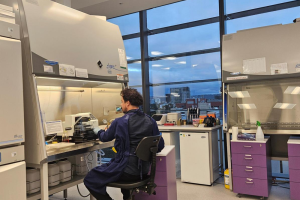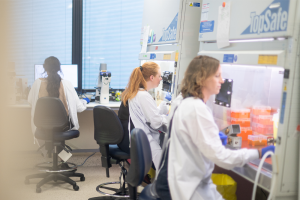We are pleased to introduce Prof Glenn Withers, Phenomics Australia Board member. Glenn is an Honorary Professor in Economics at ANU and Adjunct Professor at UNSW Canberra. He has been President of the Academy of Social Sciences in Australia and of the Australian Council of Learned Academies. He was the founding CEO of Universities Australia and, earlier, a Professor of Public Policy at ANU.
Glenn has a Harvard PhD in economics and business and has advised government, business, and community sectors, including chairing a Commonwealth Task Force on Infrastructure. He received an AO for the development of the Australian immigration points system and is Chair of the Global Development Learning Network.
Five questions with Glenn Withers: an interview with Phenomics Australia Partner Advisory Committee Chair
1. What sparked your initial interest in science and research?
Harvard doctoral students, once admitted, have the luxury of auditing any graduate courses. So, I indulged with a free rein in courses in maths and science as well as philosophy and law alongside my core trio of economics, business and policy. These interests seemed to be simple personal curiosity at the time, but they combined nicely for me. This was especially helpful later at Universities Australia and, subsequently, with the Australian Council of Learned Academies, where breadth across the many disciplines was very useful.
Within economics, I gravitated to evaluation using cost-benefit analysis as a core tool. I especially enjoyed using this in unconventional applications to topics such as defence and the arts, where benefits were more ‘intangible’.

I had done conventional business analysis for areas like mining and utilities, but consultants were taking that over as routine. Instead, along with David Throsby, winning over a sceptical Di Yerbury and Donald Horne to use economics in pioneering ways to support the humanities via the Australia Council was a much sweeter victory.
At UA, this cross-disciplinary interest led to use in big science such as arguing the case for better funding for investments such as for the Square Kilometre Array, and at ACOLA the Cross-Academy project on Precision Medicine and the justification of its infrastructure research spend fascinated me. I think you can see the logical step to Phenomics Australia when its Board looked at the idea of bringing this perspective to their table alongside its own deep knowledge of the core science.
2. How do you think Phenomics Australia currently provides value to researchers, and are there any planned new capabilities that will be available soon?
Phenomics Australia is an infrastructure facility. The word infrastructure refers to an interconnected system. Some of this is physical, but much is also sharing access to expertise as well as facilities. I am especially enlivened by the co-operative and collaborative nature of this at Phenomics Australia, because from this comes not just cost reductions from shared kit, not just the great biobank facilities too, but the synergies of sharing knowledge across twenty locations with a common cause. New initiatives too for an enhanced data-bank will take the access to this knowledge much further still.
That the knowledge especially relates to the health of Australians is pleasing. The traditional strength here has been through in vivo capabilities, where gene editing with DNA adjustment through traditional transgenic technologies produces genetically modified models of disease. This enables genetic associations with disease to be discovered.
But, this in vivo work is now being boosted by the use of the genetic scissors tool (CRISPR technology) that received the 2020 Chemistry Nobel Prize. So, one big step forward in new Phenomics Australia capabilities is recently in place.
A second big step forward is that this in vivo capability is now being complemented by in vitro (non-animal) genome engineering and disease modelling. This allows research here to be genuinely “walking on two legs”, and the complementarity of these will supercharge the research possibilities on offer.
And the impact benefits are immense, just to name a few, consider how these facilities have: helped defeat much food poisoning, enabled anti-biotics that target multi-drug resistant bacteria, provided targeted treatment for lupus and other auto-immune diseases, and even extended beyond health to uses in agriculture and environmental areas such as better control of mouse plague.
3. Since joining Phenomics Australia, how do you think the National Collaborative Research Infrastructure Strategy (NCRIS) has evolved and where do you see it heading?
With all the focus on rankings of each individual research university, I fear it is all too easy to lose sight of the fundamental underpinnings that assist those achievements. One feature of Australian universities that keeps them high in the global rankings is their system-wide provisions and services.
This covers many matters ranging from our Australian Qualifications Framework and Tertiary Education Quality Standards Authority to how we developed IDP and still provide AARNET, which pioneered the internet in Australia, and Unimutual, which is a marvellous vehicle for not just general insurance but disaster management and recovery.
For the actual conduct of research, NCRIS is a truly foundational initiative. It covers some 24 project areas, 400 partnerships and 1500 technical experts, researchers and facility managers. Co-investment with external partners is well embedded.
NCRIS is widely admired globally in research circles for bringing together these infrastructures of research for access, discussion and collaboration, and for learnings from each other and international partners.
But scientific (and humanities) research has been substantially underfunded in Australia. To me, the next step is to assist in making the past, present and the future potential achievement of the NCRIS-supported research impacts much clearer to the key decision-makers for the funding and use of research in Australia. Great efforts are being made to do this, including through new social media information, but bigger and better-directed advocacy is needed to ensure that the value of this investment is truly understood, and hence better supported.
4. What do you think are the big challenges and opportunities in Precision Medicine from an infrastructure provider perspective?
The big challenge for such infrastructure facilities as represented in Phenomics Australia is to sustain and enhance Commonwealth government base funding and attract partnership funding from State and Territory governments and industry and community partners. This is a massive juggling exercise alongside the actual conduct of the research. But to name and know the achievements from this supported research is to appreciate the ‘public value’ that results.
The emergence of ‘precision medicine’ in Australia promises to be a superlative vehicle for conveying just how valuable this research is. Recent technological advances of the kind embodied in Phenomics Australia facilities allow health and disease to be resolved at an increasingly fine-grained level for individuals, taking account of their genetic and biochemical make-up.
Prevention and treatment through such precision medicine are advancing well in clinical areas such as cancer and promise improved outcomes for complex disorders such as diabetes and cardiovascular disease – and beyond.
The ‘scaling up’ that this requires means further funding is required. But also, under ‘mutual obligation’ principles, there is a need for the sector to keep self-improving. For example, reform for even better professional training, skilling and standing of the research support workforces that are the backbone of service delivery here, is necessary and feasible.
Research appropriately lauds the research super-stars. These, however, stand on the shoulders of giants across the whole of the research, professional, and administrative workforce.
5. If you had pursued a different career path, what would it have been?
I am doing it. One great benefit of modern longevity is that you can have multiple careers. I have enjoyed working in government, business and the community sector. Watching Prime Ministers, Vice Chancellors and Entrepreneurs, and all around them, ply their craft is actually intellectually fascinating and very useful for knowing how to advance policy.
I learned much, but I invariably hankered to return to the research university for more core meaning through advancing knowledge and doing this as an Australian academic. Having worked in countries from Mauritius, Malaysia and Bhutan to Germany, USA, UK and China, each was fascinating, but Australia was home.
And, within Australian academe, while sticking to a core of social science, I am now interrogating cybersecurity and phenomics, having much earlier indulged my curiosity over the world of arts and culture similarly, beyond my core economics, business and policy. How much fun is that? And I think it helps these fields to occasionally have a view of that universe from a different angle. Phenomics is research, and the cybersecurity venture is research and business, bringing psychological, organisational and policy perspectives to engineering and IT frameworks.
The key thing is to ensure our systems allow others to do that too today more widely than at present. The Humboldt model of science added to the Oxbridge personal development vision of universities, the modern disciplinary model of deep research. We owe so much to the insights that emerged.
But, application, development, engagement, interdisciplinarity, and holism are also valuable to have. Again, we need both approaches.
Modern mandarins, managers and markets have tamed the scholarly community too much. Our workplaces would be happier still, and even more productive, with a little more true scholarly licence, both deep and wide.







